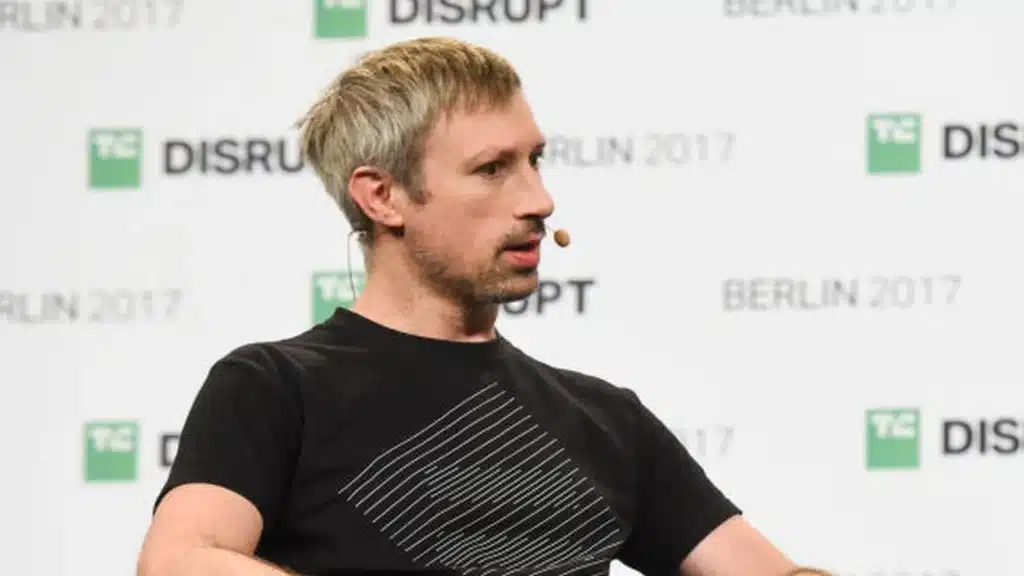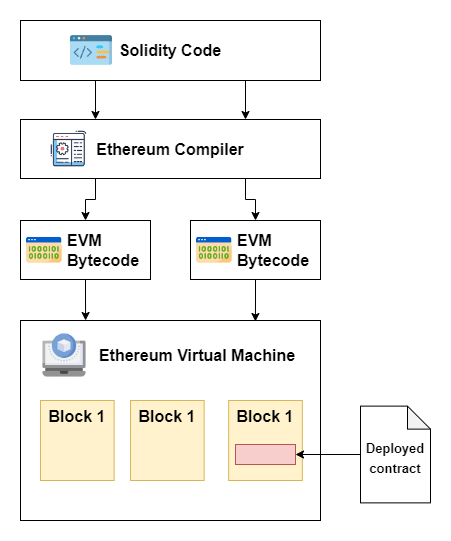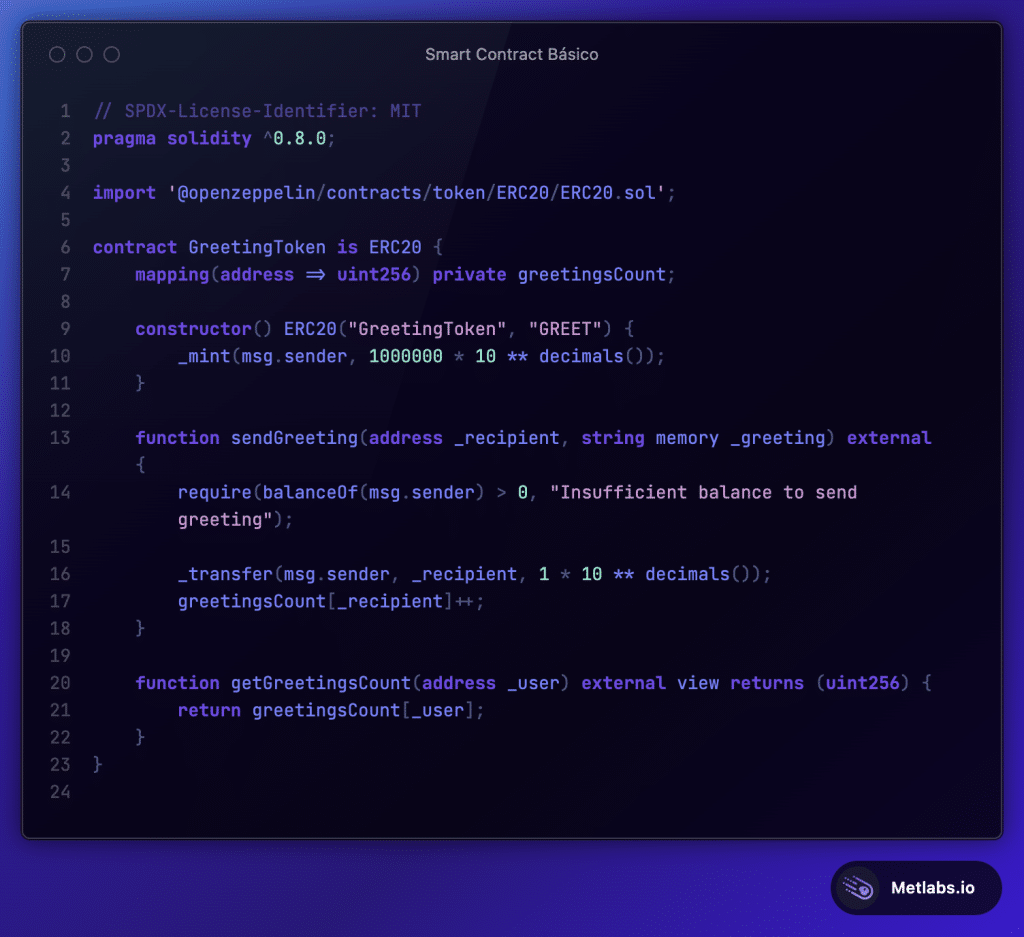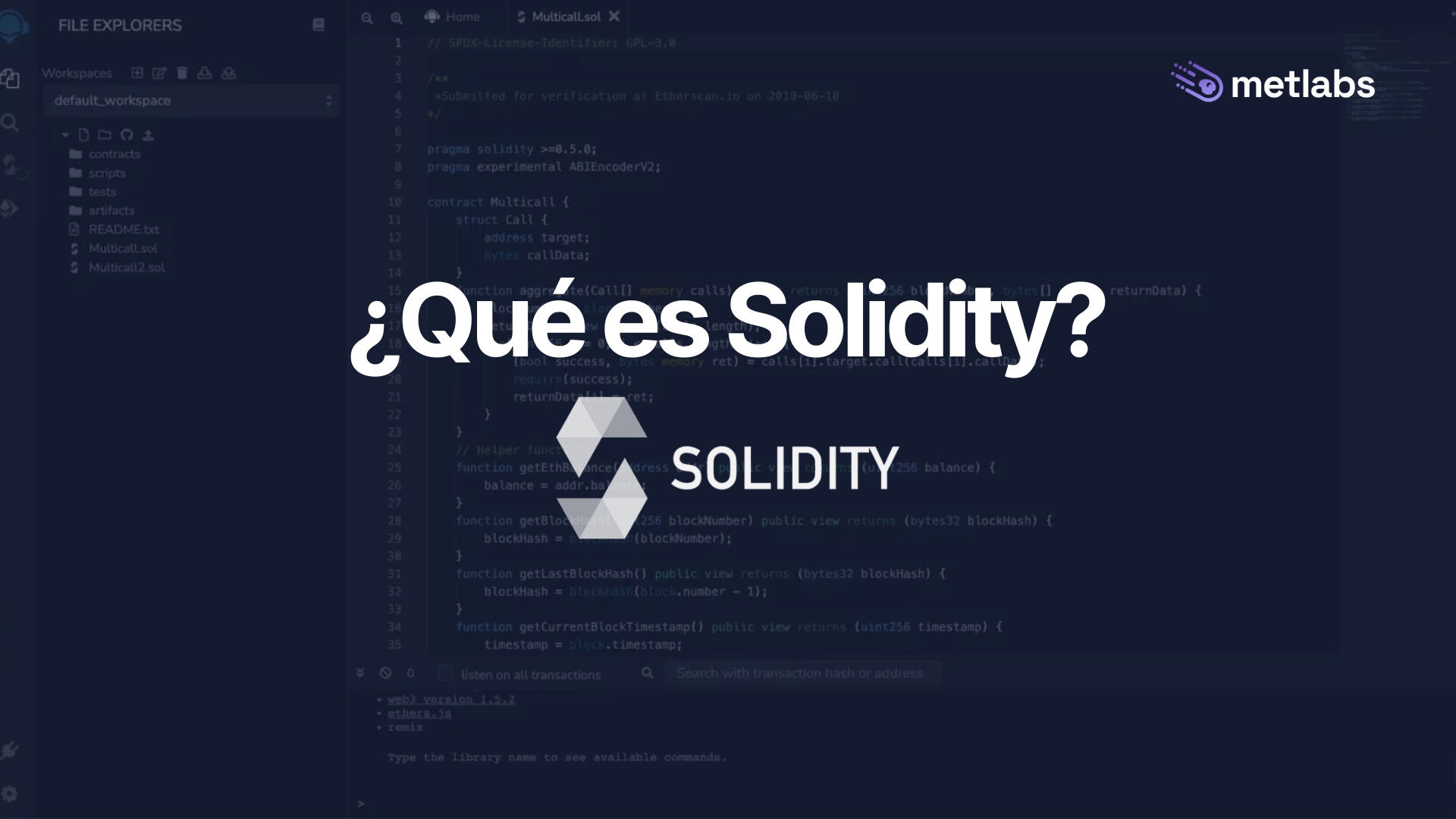Solidity, is a programming language specifically designed for developing smart contracts on blockchains compatible with the Ethereum Virtual Machine (EVM), standing out as the cornerstone for the development of dapps (decentralized applications). In this post, we will explore its essence, its connection to EVM networks, and how this language has triggered a new era of smart contracts, transforming the way we conceive and execute agreements in the decentralized landscape.
Origins of Solidity:
The birth of Solidity dates back to the early days of Ethereum in 2014. Its genesis is attributed to Gavin Wood, a key programmer on the founding team of Ethereum. At that time, the growing popularity of cryptocurrencies and decentralization posed a fundamental question: How could we translate complex agreements and transactions into executable code on the blockchain?
Gavin Wood, recognizing this critical need, embarked on the task of creating a programming language that could address the specific challenges of smart contracts. Thus, Solidity was born, designed from its foundations to facilitate the programming of business rules in a secure and efficient manner.

In its early stages, Solidity focused on providing developers with a familiar syntax, inspired by languages like JavaScript and C++, to ease the transition and rapid adoption. The vision was clear: to enable anyone with programming knowledge to participate in the smart contract revolution.
As Ethereum solidified its position as one of the leading blockchain platforms, Solidity became essential to its ecosystem. Its evolution did not stop, and contributions from the community and the development team ensured that the language adapted to the changing demands and challenges of the blockchain space.
Hoy en día, Solidity no solo es un lenguaje de programación; es la columna vertebral de innumerables aplicaciones descentralizadas (dApps) y contratos inteligentes que impulsan la interoperabilidad y la confianza en la cadena de bloques. Desde sus modestos orígenes hasta su papel central en el panorama blockchain, Solidity sigue siendo un testimonio del impulso constante hacia la innovación y la accesibilidad en el mundo de la programación para contratos inteligentes.
Solidity y Ethereum Virtual Machine (EVM): Explorando la Simbiosis Fundamental
Solidity, created by Gavin Wood in 2014, is not just a programming language; it is the catalyst that links Ethereum’s ambitions with the execution of smart contracts. Its history is intrinsically intertwined with the Ethereum Virtual Machine (EVM), the virtual machine that executes these contracts on the Ethereum blockchain.
The connection between Solidity and EVM is crucial to understanding how smart contracts take shape and come to life on the network. Ethereum Virtual Machine acts as the execution engine, interpreting and carrying out the code written in Solidity. This symbiotic relationship is what enables developers to create business rules, programmable logic, and automated agreements securely and reliably.
EVM, essentially, is a Turing-complete virtual machine that executes smart contracts using bytecode. Solidity, on the other hand, acts as the linguistic bridge between developers and this virtual machine. Contracts written in Solidity are compiled into bytecode that EVM can understand and execute. This abstraction allows even those without a deep understanding of the internal workings of EVM to participate in the creation of smart contracts.
The Solidity-EVM relationship has proven to be the foundation of the smart contract revolution on Ethereum. It enables reliable and decentralized execution of agreements, eliminating the need for intermediaries and providing transparency to transactions. Thus, Solidity not only simplifies the development of smart contracts but also opens the doors to a new paradigm of trust and efficiency in the blockchain realm.

Getting Started with Solidity Programming:
If you’re intrigued by the idea of programming smart contracts and stepping into the decentralized world with Solidity, we’ll provide you with a basic step-by-step guide to take your first practical steps in smart contract development. At Metlabs, we specialize in smart contract and dapp development with Solidity, get informed without obligation, and kickstart your blockchain project.
You can start programming your first Smart Contract with Remix. Through this online platform, accessible directly from your browser, it provides an intuitive development environment and allows you to write, compile, and deploy smart contracts efficiently.
Remix and Its Highlighted Features:
Access Remix directly from your browser, and you’ll be ready to bring your smart contracts to life. Remix provides:
- Integrated Editor: A development environment with a robust code editor that allows you to write, edit, and test your code directly on the platform.
- Simple Compilation and Deployment: Remix offers integrated tools for efficiently compiling and deploying your contracts, allowing you to focus on your contract’s logic rather than worrying about implementation details.
- Testing Environment: You can test your smart contracts directly on Remix using the integrated execution environment, making it easy to identify and correct potential issues.
Example of a Basic Smart Contract in Solidity: An Initial Look
In this example, we will create a more advanced contract representing a greeting token. This contract will allow users to send personalized greetings and keep track of how many greetings they have sent. Additionally, we will incorporate the OpenZeppelin library to ensure the contract’s security.

- OpenZeppelin Import:
import "@openzeppelin/contracts/token/ERC20/ERC20.sol";: Imports the OpenZeppelin library to use ERC20 functionality, which is standard for tokens on Ethereum.
- Contract Declaration:
contract GreetingToken is ERC20 { ... }: Declares theGreetingTokencontract inheriting ERC20 functionalities.
- Mapping of Sent Greetings:
mapping(address => uint256) private greetingsCount;: Creates a private mapping to keep track of how many greetings each user has sent.
- Contract Constructor:
constructor() ERC20("GreetingToken", "GREET") { ... }: Initializes the contract upon deployment, minting 1,000,000 tokens with the name “GreetingToken” and the symbol “GREET”.
sendGreetingFunction:function sendGreeting(address _recipient, string memory _greeting) external { ... }: Allows users to send personalized greetings. Requires sufficient balance and transfers 1 token to the recipient.
getGreetingsCountFunction:function getGreetingsCount(address _user) external view returns (uint256) { ... }: Returns the amount of greetings sent by a specific user.
Develop Your Smart Contracts with Blockchain Professionals
At Metlabs, we have solid experience in developing comprehensive blockchain-based solutions, specializing in Smart Contract creation. From MVP conception to final product delivery, our team of Blockchain professionals is committed to providing solutions tailored to your company’s specific needs.
With extensive experience in implementing secure and efficient smart contracts, at Metlabs, we understand the importance of precision and reliability in blockchain solutions development. Our approach focuses on delivering tangible results, from planning and design to implementation and continuous optimization. Contact us without obligation and start your project.








